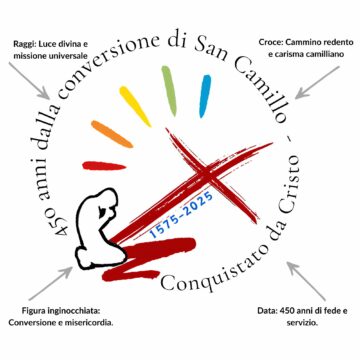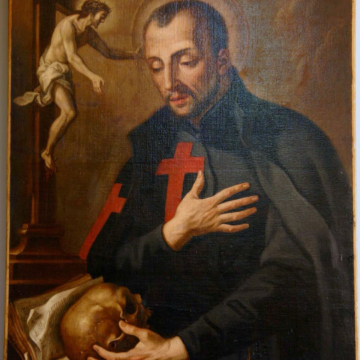Before describing the specific charism of two secular institutes that live the spirituality of Saint Camillus, that is to say the Kamillianischen Schwestern and the women Missionaries of the Sick ‘Christ our Hope’, I think it is important to describe the charism of secular institutes.
Secular institutes arose from the heart of the Church in 1947 with the document Provida Mater Ecclesia. This document recognised secular consecration, that is to say it recognised that lay men and lay women could – albeit remaining in the world – live consecration, which hitherto had been held to be possible only in a religious way, to the full.
We are dealing here with full and total consecration, consecration for ever, lived in commitment to the evangelical counsels of chastity, obedience and poverty, evidently enough in lay forms.
The specific charism of secular institutes involves therefore the inseparable unity of two elements: consecration and secularity.
In 2017 the Congregation for Consecrated Life, on the occasion of the seventieth anniversary of the promulgation of Provida Mater Ecclesia, drew up a document to be sent to all the bishops of the world in order to express and strengthen the identity of secular institutes.
The Pope himself said on that occasion that the Church in 1947 had generated a revolutionary act of great courage by creating and recognising the vocation of consecrated laity that broke with, and went beyond, all previous schemata.
Subsequent to that date, when speaking about consecrated life one has to be well aware that two forms of such life exist:
- Religious consecrated life with its characteristic signs of communities, works or specifically intra-ecclesial activities.
- Secular consecrated life with its characteristics of life within a diaspora, of presence in social contexts, in work contexts, and in the most diverse environments.
The identity of secular institutes is thus secular consecration: secularity and consecration mutually illuminate each other.
St. Paul VI expressed himself in the following way: ‘The soul of every secular institute has been the profound strong desire for a synthesis, the yearning for the simultaneous affirmation of two characteristics: the full consecration of life according to the evangelical counsels and the full responsibility of a transforming presence and activity from within the world’.
Secularity leads us to be inside all realities and situations, to live difficulties like all lay people, participating from within in the search for the common good, at work and in daily toil. This presence, which is rooted in the mystery of the Incarnation, of God made man, seeks to bear witness to the fact that the Gospel can be lived in any environment or situation of life, and seeks to cooperate to bring out all the evangelical possibilities that are often hidden, but already at work, in the world.
Secularity in an evident way also provides a way of living chastity, poverty and obedience with a lay spirituality.
Secularity also involves a lack of community life and of shared works. Indeed, each person lives as the Church, as a Christian lay man or woman, every service in every environment.
Not having a community life does not mean not living the spirit of communion. We are bound together by a community charism that is recognised and approved by the Church and which is expressed in a Constitution that clarifies its spirit and its ties.
 We live fraternal communion and this is: strength and support in the difficulties of life as a spiritual family; a setting for continuous and ongoing formation through periodic and regular group meetings; and a setting for help and the ascertainment of faithfulness as regards the tasks assigned by leading figures.
We live fraternal communion and this is: strength and support in the difficulties of life as a spiritual family; a setting for continuous and ongoing formation through periodic and regular group meetings; and a setting for help and the ascertainment of faithfulness as regards the tasks assigned by leading figures.
Secular institutes have different forms of spirituality and mission; some have a mission that gives them a special definition. Two secular institutes refer to the spirituality and the mission of Saint Camillus.
- The Secular Institute of the Women Missionaries of the Sick ‘Christ our Hope’
This institute was founded by Germana Sommaruga who in the year 1936, at the age of twenty-one, had the ‘first idea’, that is to say a prophetic intuition to create a group of woman who would consecrate their lives to service to the suffering in line with the spirit of St. Camillus.
Over the following years, with the advice and support of Fr. Angelo Carazzo who was a Camillian, this idea became clearer and more concrete until in 1948 the institute was recognised as being of diocesan right in Cremona by Archbishop Msgr. Giovanni Cazzani and had the name ‘Women Missionaries of the Sick’. In 1953 it became of pontifical right and in 1961 its obtained its definitive approval.
In 1979 the Congregation authorised the addition of ‘Christ our Hope’ to the original name. This addition was the outcome of a journey of thought, in particular about mission.
Indeed, the spirituality of hope animates and illumines every aspect of this charism and in particular that of ‘mission’; it leads us to draw near to the world of suffering in order to bring to it the hope that springs from Christ who was crucified and rose again and who in his death offered the fullness of life.
It leads us to work in the world, loving it as a setting for the presence of God and working with His grace in order to cooperate and construct a civilisation of love, in hope.
2) The charism of the institute has three essential and inseparable characteristics:
– Consecration lived as a response to a call, as a gift to implement the project of love of the Father, following Jesus.
– Secularity, which finds its model in Christ who shared in the lives of his people and his time and leads us to be in society a sun, light, and a yeast of truth in charity.
– Specific ‘mission’ towards the suffering that draws upon the spirituality of St. Camillus and is expressed in our fourth vow.
Because of ‘mission’ we want to be a presence of the Risen Christ; hope of men amongst the least and the poorest of our brothers and sisters – the sick, the dying, the elderly, the handicapped, those oppressed by any suffering.
–To try to make attentive to our brothers and sisters those who surround us as well and to work to contribute to the formation of a more supportive and fraternal society.
Each member of this institute is involved, according to their time, opportunities and circumstances, in the way that best corresponds to their personal call.
The red cross that we receive at the moment of the donation reminds us of this commitment to full and total love.
3) This form of mission is specific precisely because the institute does not have any works of its own of any kind. The fact we live in a diaspora requires a deep sense of community and a profound commitment to formation.
 The institute has a government with a President General (she is voted for at a general assembly and her mandate lasts five years) and it is organised into regions and groups. It is at this level that the whole of formation takes place, with monthly meetings, days of study, annual renewal courses, personal meetings for an ascertainment of faithfulness to the vocational journey, formation material, etc.
The institute has a government with a President General (she is voted for at a general assembly and her mandate lasts five years) and it is organised into regions and groups. It is at this level that the whole of formation takes place, with monthly meetings, days of study, annual renewal courses, personal meetings for an ascertainment of faithfulness to the vocational journey, formation material, etc.
Vocational discernment is intense and seeks to help people to understand whether they are called to live this form of consecration in the world, which is something that requires ability and readiness to help. During this period they are flanked by a specially appointed person who continues to help them to understand and to assimilate the spirituality and the charism of the institute and to express what the Constitution requires. This period of formation lasts from to three to five years and ends with the temporary donation which lasts between five and seven years before leading on to the perpetual consecration.
Secular consecration requires a true vocation in order for that person to be able to live in fullness and joy, at the service of God and our brothers and sisters in the consecrated reality of everyday life.
The institute has roots in various countries of the world, with groups of varying numbers, but always with local people. At the present time we number about 250 and we are present in:
Europe: Italy, France, Poland
Latin America: Brazil, Argentina, Peru, Colombia, Chile
Asia: Vietnam, Taiwan
Africa: Madagascar, Cameroon, Burkina Faso, Benin
The institute strongly feels this missionary undertaking which involves working with the local Churches to support the vocation to the formation of the laity and care for the world of suffering.
Everywhere in the world people suffer and die; everywhere in the world it is necessary to act for the sake of justice and to construct a more human society in conformity with the evangelical counsels. Therefore, everywhere we need the presence of people who bear witness to, and embody, the gospel message, living self-giving to the Lord and working as a presence of hope above all amongst those who suffer the most.
Germana, after a life of great activity and involvement, died in a nursing home like any other lay woman at the age of eighty-one on 4 October 1995.
She has already been declared a ‘Servant of God’ and her cause for beatification is now underway.
The women Missionaries of the Sick seek to live the gift of the vocation to secular consecration in humility and simplicity, remembering the words that Germana Sommaruga left to us in her testament: ‘I remind you to give your hands to God who is the good Father, to stay in communion with Christ who is our hope, to listen to the holy and sanctifying Spirit, to be daughters for Mary, a sign of certain hope and comfort, and to look to Camillus and to love him. I invite you to extend with great effort, and at the same time humi













Camillians on Facebook
Camillians on Twitter
Camillians on Instagram